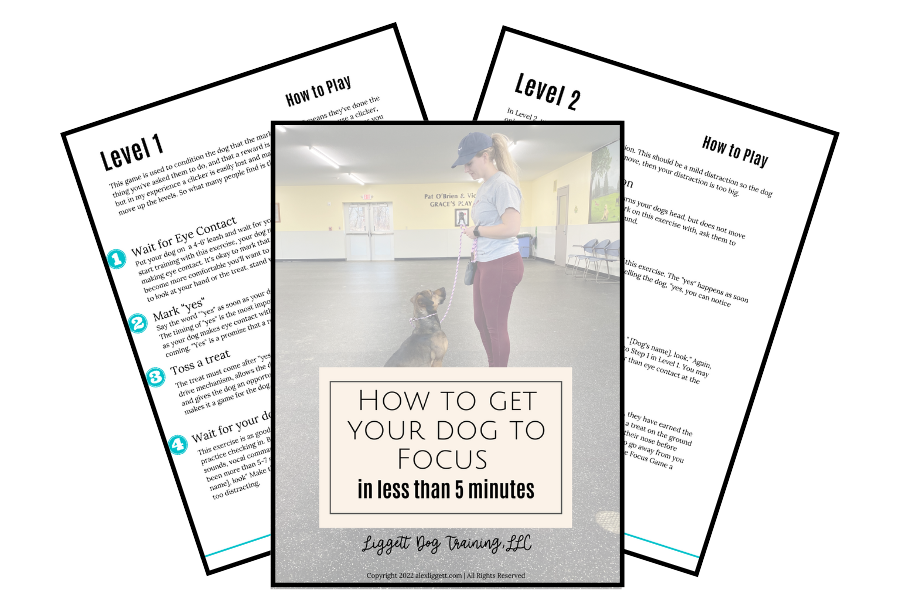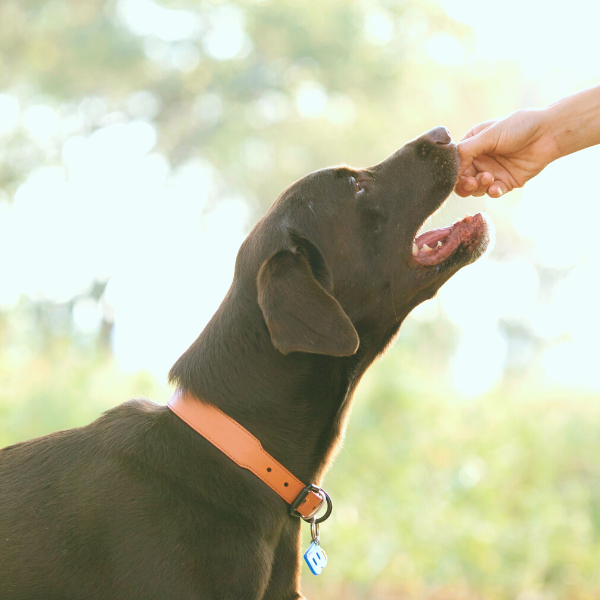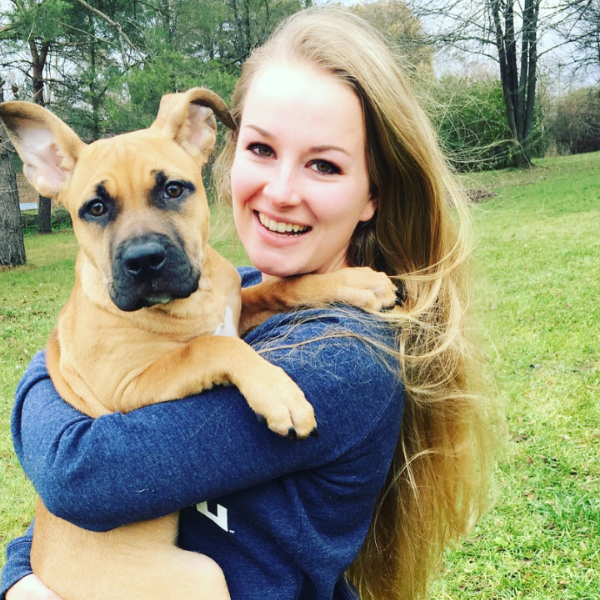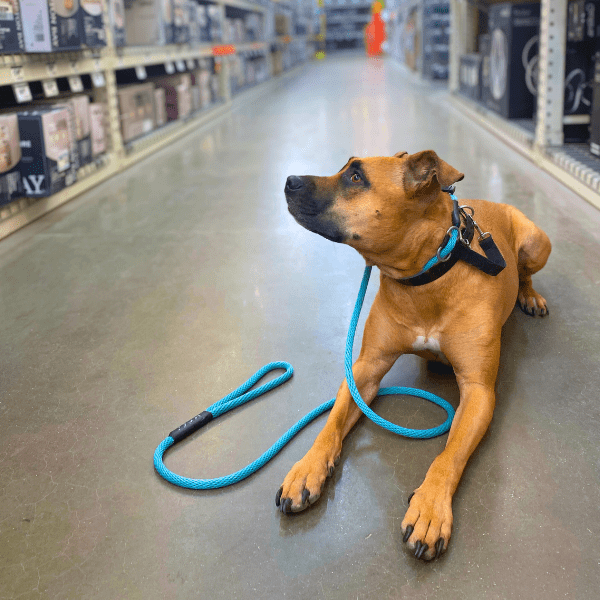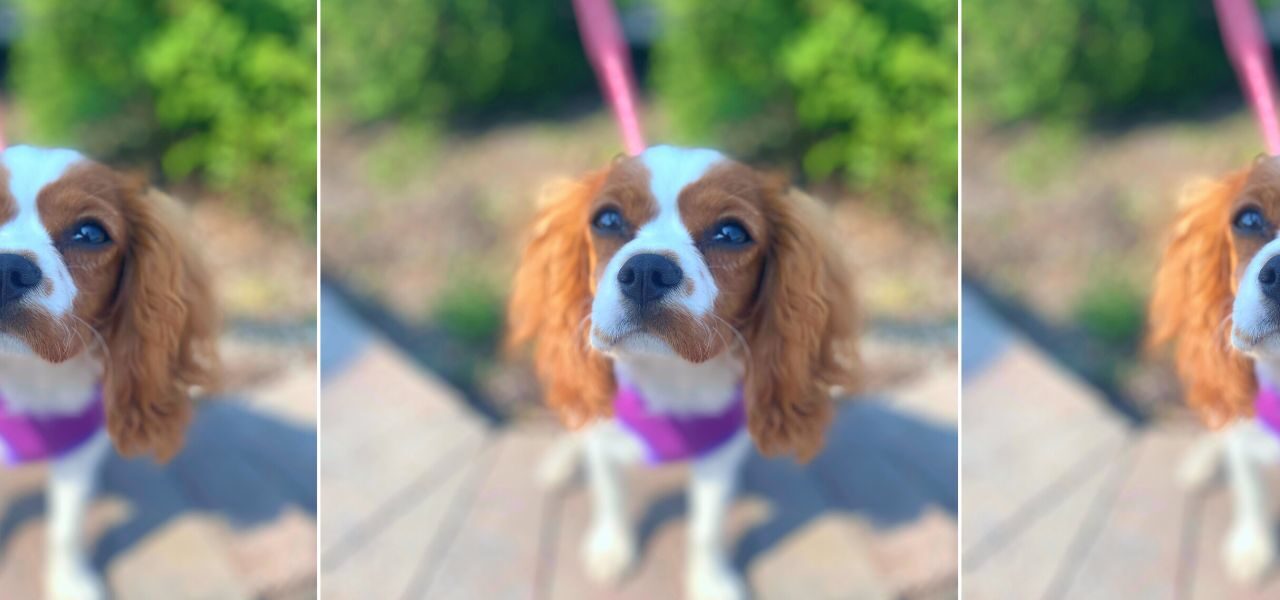
Your puppy training class might teach you all about sit, lay down and come, but are they teaching you these puppy training tips?
Bringing home a puppy can be such an exciting- and testing time. After working professionally with hundreds of puppy owners, I've learned what the most common mistakes and best practices are to create a well-adjusted, happy family member.
Whether you're struggling with potty training, obedience, or you have a puppy engaging in resource guarding, biting or other unruly behaviors, these tips are for you!

Puppy Training Tips
If you've just brought your puppy home, remember, you're raising a member of your family. It is your responsibility to show them what the expectation is, and how to have a normal life.
It's always a good idea to work with a professional to make sure you are setting your puppy up for success. This way, they can help cater to the individual needs of your family and the individual characteristics of your dog.
Don't have a dog trainer? Schedule a consult now to discuss a custom plan for you and your dog!
So, here are some of the most common tips I teach puppy owners.
1. Don't spend so much time on sit
An obedient dog isn't always calm, but a calm dog is likely to be obedient.
There are so many things you're responsible to teach your dog. However, people think of dog training and immediately think about teaching a dog obedience like "sit".
Obedience is important, but so is calmness. Waiting for calmness before coming out of the crate, through doors and before food will teach your dog that calmness=get the thing they want.
If you want to concentrate on an obedience command, teaching a dog a command like "down" is much more useful. Your puppy can hold the down position much longer than the sit.
And- don't forget a release word, like "break", to hold your dog accountable to their obedience.
Related: Teaching a Dog to Sit (So They Actually Listen the First Time)
Sit is cool, but it's important to spend more time working on leash-work, down, recall, socialization, crate training and potty training. These are the skills that are really important to help your dog adjust to life in any home!
Puppy Training Tips Week by Week
2. Invest in good nutrition (or at least good treats)
This is often an underestimated part of training and dog behavior. Your puppy is growing and needs good, quality nutrients in order to grow and function properly.
Plus, your puppy needs a ton of calcium and phosphorus, so chewing on bones serves two purposes- keeps them busy and provides them with essential nutrients.
I always recommend to use a puppy's kibble as their treats for training, and to invest in some good quality whole food treats. This is especially true for their high value reward.
Personally, I feed my dogs a mix of kibble and whole foods and usually a packet of Darwin's Raw Dog Food.
Related: Raw Feeding Dog Guide | 7 Easy Steps to Improve Your Dog’s Diet
Puppy Training Tips at Home
3. Invest in interactive toys
Lamb chop is a fan favorite, but also doesn't last very long.
Interactive toys are one of the best ways to keep your puppy entertained and busy.
Plus, interactive toys usually engage a puppy's sense of smell and requires them to use their brain. Which is wayyy better for puppies than just eating food out of a bowl.
Related: 14 Indoor Dog Activities Guaranteed to Tire Any Dog
4. Remember, you are always training your puppy.
Do not wait to train your puppy until they "get to _x_ weeks old"
From the second you bring your puppy home you are training them. They are learning how to make sure their needs are met, how to be on their own, and what kind of owner you are. Your puppy is learning the routine and learning what is normal all. the. time.
Think about what is normal for your life year round, and find ways to expose your puppy to those things even when it's not in season. If you go out hiking or downtown, do not wait until your puppy is an adult to start introducing them to those activities.
Take your puppy out to a store like Home Depot or Lowe's. Take your puppy to grooming, the vet, parks, family's houses, and to any other places they'll be regularly. Show your puppy going places is a normal part of life.
Puppy Training Tips for Beginners
5. Don't teach "come" from a "sit" or "down".
In reality, you are almost never going to ask your dog to come from a sit, so why practice asking them to come from a sit?
Your dog will probably be doing something they think is super fun, that you do not think is fun. Your dog will be running after a squirrel, digging in the yard, or just plain not listening.
It is your job to teach your dog context for the word "come".
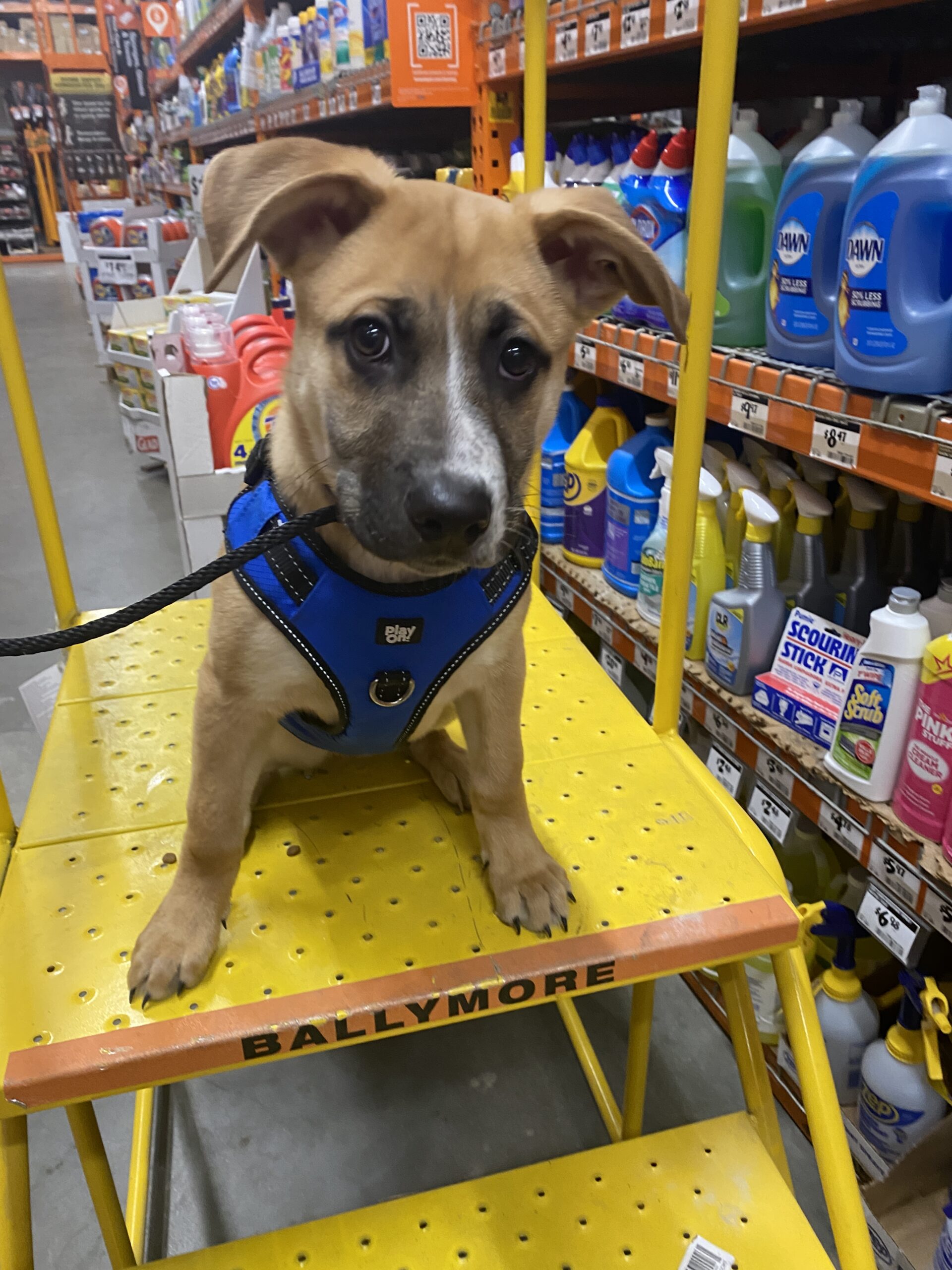
6. Teach your puppy to walk on different surfaces
So many people skip this step, and then wonder why their dog hates getting on the scale at the vet. Teaching your dog to approach different types of surfaces is super important.
This will also help build their confidence in themselves and prevent them from being afraid of tiled floors and grooming tables.
The best place to do this is at a play ground or home improvement store!
(P.S. I usually avoid pet stores since there are lots of people and dogs that want to great you. Home Depot stores are way better in my opinion because it's just a bunch of dudes doing a pinterest project for their wife and they won't be as distracting for your puppy)
Puppy Training Tips for Biting
7. Make sure your puppy is sleeping
Whenever a puppy is biting, especially to the point of leaving bruises, drawing blood or corrections seem to excite them, you need to make sure that your puppy is sleeping.
Puppies who are sleep deprived can become easily overstimulated and resort to biting and aggressive behaviors.
Biting aggressively is a very common symptom for a puppy who is tired. They need anywhere from 16-20 hours of sleep per day. And, puppies who come from shelter environments or have lived in three or more environments are at a higher risk for sleep deprivation.
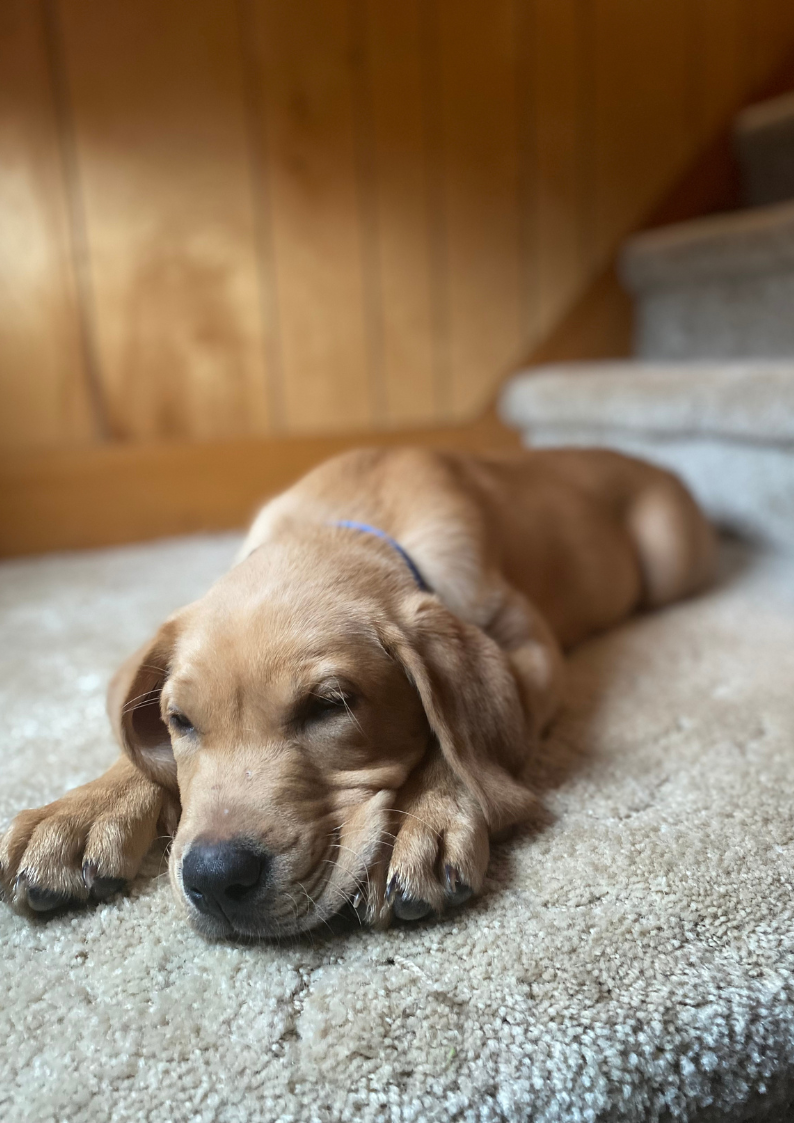
To help facilitate this, using a crate will be a the easiest and quickest way to help your puppy sleep.
If this sounds like your puppy, it's a good idea to reach out to a professional to help with making sure you and your puppy are on the right track.
8. Advocate for other members of the household
If you have children or a polite older dog who is not correcting your puppy enough, it is okay to advocate for them.
As the owner of the puppy, you have a responsibility to teach your puppy what is expected of them.
If your older dog or child isn't able to correct the puppy, but showing signs that they do not want to be engaging with the puppy, you need to move your puppy away and translate the message.
Puppies are just like kids and sometimes need help taking social cues that it's not time to engage in play or rough housing.
Puppy Training Tips for Potty
9. Utilize your crate
Related: How to Get My Puppy to Stop Barking
Your crate is one of the most important tools for training your dog.
The crate is an essential tool for preventing behaviors like reactivity and aggression. It also prevents separation anxiety and destructiveness.
When you teach your dog about the crate, they learn essential skills like how to self-soothe, deal with their F.O.M.O. and how to keep their crate and themselves clean.
Related: Crate Training a Rescue Dog | 5 Tips for Teaching Your Dog to Love the Crate
10. Don't tip-toe around your puppy
Too many times people try to sneak around their puppy because the puppy is trying to sleep or the puppy is in the crate.
You should not have to alter your behavior to accommodate your puppy's behavior. Your puppy needs to learn to be on their own without the fear of missing out on activities or excitement.
11. Take your puppy outside often
Your puppy will need to go out - a lot! The rule of thumb is that they can hold their bladder for one hour per month they've been alive. For example, a 3 month old dog can hold their bladder for three hours.
Related: Top 5 Mistakes Made When A Puppy Won’t Pee Outside
There are peak times your puppy will need to go out: after a nap, after drinking or eating, after playing, and after coming out of the crate.
Check out this great potty puppy flow chart to help determine if your puppy needs to go outside!
Puppy Training Tips 8 Weeks
12. Don't let your puppy meet everyone they see
While it's important to teach your puppy that people are friendly, it's also important to teach them impulse control.
Don't fall pray to thinking, "Oh he just wants to say hi!" Otherwise, you'll create a dog who rushes to greet everyone, guests who don't like dogs, unfriendly dogs and people across the street.
The goal is to teach your dog a neutral reaction towards people, dogs and other triggers.
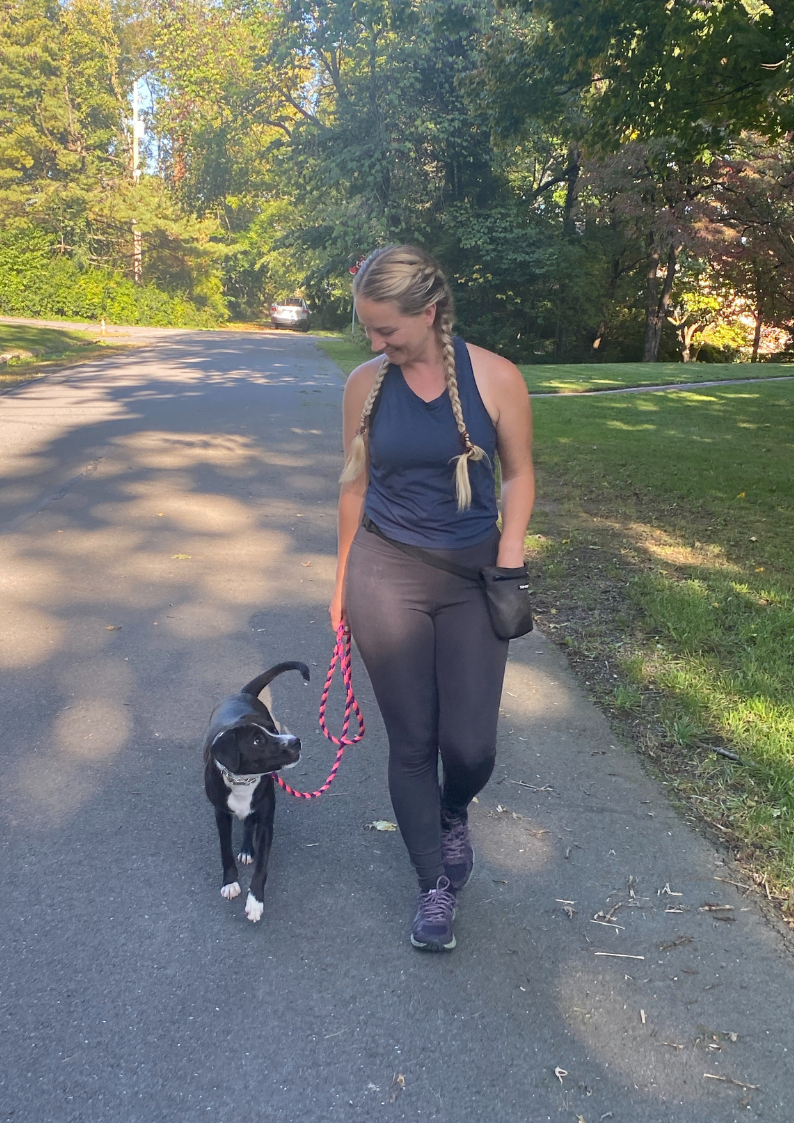
Puppy Training Tips PDF
13. Play the Focus Game
This will be one of your dog's favorite games! (and, you're training them to think about you rather than all of the distractions in the world!)
Plus, this game will help you with all of your obedience and especially your recall!
How to Train a Puppy To Pee Outside
14. Teach your dog about the slip leash
When your dog is a puppy, it is the easiest time to teach them not to pull on the leash. Dogs are born with an instinct to pull against pressure on the leash.
There is no such thing as a no-pull harness, no-pull collar or no-pull leash. You have to teach your dog to give to pressure. Use this article on how to use a slip leash to train your puppy to walk nicely on a leash.
Related: Best Dog Leashes for Training
Puppy Training Tips Schedule by Age
15. Remember, you are training a dog, not a puppy.
New puppy owners are tempted to view some behaviors as "cute" or allow puppies to get away with things that an adult dog would not be able to get away with. Ultimately, teaching your puppy appropriate behavior is much easier than correcting your dog's unwanted behavior.
Ask yourself, "is it cute if a full grown dog does this?"
Raising a puppy is all about making sure that your puppy is being set up for success and being shown what to do. It's okay to stop, take a deep breath and start over. Puppies are forgiving, and want to do the right thing!
You've got this!
Want more tips for your puppy? Check out our Puppy Category!


